You can program your wearable GPS navigator by integrating essential hardware like GPS receivers, microcontrollers, and communication modules with custom voice recognition software. You’ll need to implement speech processing algorithms that handle background noise and accents, establish secure API connections for real-time data exchange, and use encryption methods like AES for location data protection. Focus on power management strategies and intuitive voice command interfaces that provide clear audio feedback. Master these fundamentals to access advanced development techniques.
Essential Hardware Components for Voice-Activated GPS Wearables
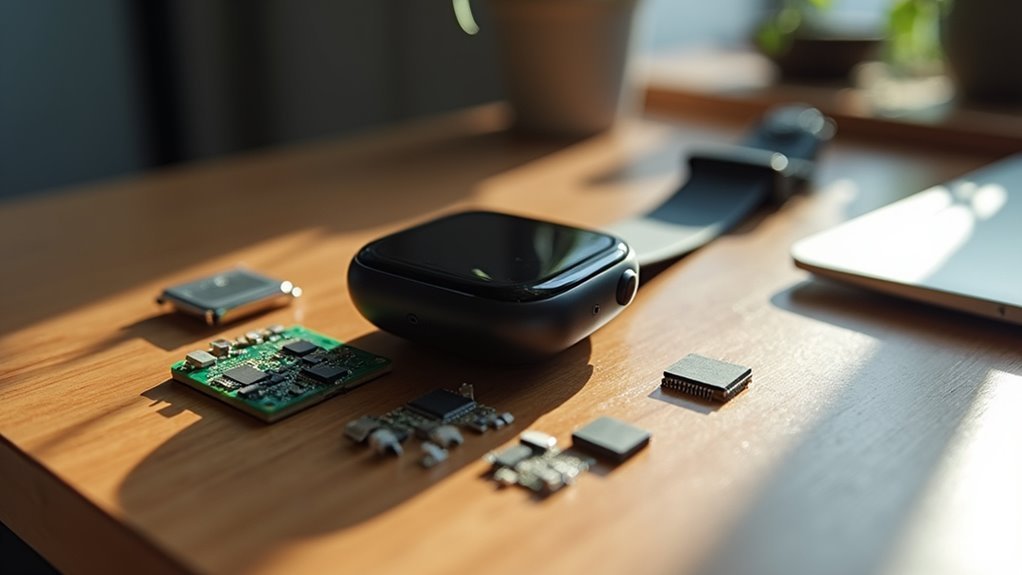
While traditional GPS devices rely on bulky hardware and visual displays, voice-activated GPS wearables pack sophisticated technology into compact, lightweight forms that respond to your spoken commands.
Modern GPS wearables transform bulky navigation systems into sleek, voice-controlled devices that eliminate the need for cumbersome screens and manual operation.
You’ll find the GPS receiver at the core, using radio waves to triangulate your position from satellite signals. The antenna system captures these weak satellite transmissions through specialized patch or chip antennas with integrated amplifiers.
Your device’s microcontroller processes this data while managing communication between components and handling sensor fusion for accuracy. Rechargeable batteries power everything efficiently through smart power management systems that extend usage time.
Communication modules like Bluetooth or Wi-Fi transmit data, while speakers provide voice feedback and haptic systems deliver hands-free alerts. These wearables connect to the Navstar GPS constellation of satellites that orbit the globe to provide precise location data.
Programming Voice Recognition Software and Integration APIs
You’ll need to implement voice command functionality that accurately interprets navigation requests while integrating with established APIs for seamless operation.
Your speech processing algorithms must handle real-world conditions like background noise and varying accents to guarantee reliable GPS control. Modern multilingual support capabilities enable your wearable navigator to seamlessly switch between languages during voice commands, making it invaluable for international travelers and diverse user bases.
The integration methods you choose will determine how effectively your wearable device responds to voice inputs and communicates with mapping services.
Voice Command Implementation
When implementing voice commands for your wearable GPS navigator, you’ll need to integrate speech recognition software with navigation APIs to create a seamless user experience.
Python and Java offer extensive libraries for this purpose, making them ideal programming languages for your project. You’ll want to leverage services like Google Cloud Speech-to-Text or Microsoft Azure Speech Services for reliable voice recognition capabilities.
Focus on translating voice commands into machine-readable syntax that your GPS system can execute. Your Arduino board will control GPS modules while managing voice inputs effectively.
Don’t forget to implement robust error handling for unrecognized commands and misinterpreted inputs. Design a user-friendly interface that provides clear audio feedback through headsets, ensuring your wearable device remains accessible and intuitive for all users. This system should incorporate emergency alerts functionality to automatically notify predefined contacts when distress commands are detected.
API Integration Methods
Since your wearable GPS navigator requires seamless communication between voice recognition software and navigation systems, you’ll need to establish robust API connections that handle real-time data exchange efficiently.
You’ll primarily work with HTTP APIs using JSON data formats for their simplicity and versatility. Implement OAuth authentication to secure data exchanges between your device and third-party services.
Consider using integration platforms like Terra API or Thryve Platform to streamline development across multiple wearable brands. These tools help you avoid the fragmented ecosystem where each manufacturer has unique API processes.
Pay attention to rate limits, as exceeding them can cause integration failures. Focus on data harmonization to guarantee consistent health and location data formats.
Quality API documentation will greatly impact your integration success and troubleshooting efficiency. Modern solutions can connect with 99% of wearables available in today’s market, ensuring broad compatibility across different device manufacturers.
Speech Processing Algorithms
Building effective speech processing algorithms forms the foundation of your wearable GPS navigator’s voice recognition capabilities.
You’ll need to implement digital signal processing techniques that filter ambient noise and enhance speech clarity, especially vital for outdoor navigation environments. Machine learning-based enhancement algorithms adapt over time, improving accuracy as they learn from your speech patterns and local acoustic conditions.
Key algorithmic components you should integrate include:
- Single-channel speech enhancement for processing audio from your device’s primary microphone
- Real-time processing capabilities that provide immediate response to navigation commands like “navigate home”
- Error correction mechanisms that verify and validate spoken addresses before route calculation
These algorithms work together, ensuring your GPS navigator accurately interprets voice commands while you’re walking, driving, or cycling through various acoustic environments. Professional voice users can benefit from vocal load monitoring integration to prevent strain during extended navigation sessions.
Optimizing Battery Life and Power Management Systems
While traditional wearable GPS devices have long struggled with the fundamental trade-off between positioning accuracy and battery longevity, emerging power management technologies are revolutionizing how these devices balance performance with energy efficiency.
You’ll find that LEAP technology offers a game-changing solution, reducing power consumption by up to 50% while improving accuracy through activity-aware motion models for running and cycling.
You can extend your device’s battery life by implementing smart tracking intervals and utilizing sleep modes during inactivity.
Consider leveraging your cell phone’s GPS to reduce your wearable’s GNSS dependency.
Environmental factors like extreme temperatures will affect performance, so you’ll want to optimize software algorithms and choose appropriate battery types. Advanced wearables now feature multipath mitigation techniques that reduce errors from reflected signals in challenging urban and forest environments.
Combining ultra-low-power sensors with hybrid solutions maximizes functionality while minimizing energy consumption.
Implementing Secure Data Storage and Privacy Protection

You need robust encryption methods to protect your location data both on your wearable device and during transmission to cloud servers.
Your device should provide transparent information about data collection practices and obtain your explicit consent before sharing any personal information with third parties.
Secure cloud storage solutions with end-to-end encryption guarantee your GPS tracking data remains confidential and protected from unauthorized access. Given the fragmented nature of the wearable market where over 40% of devices have less than 5% market share, ensuring data interoperability becomes crucial for maintaining consistent security standards across different vendor platforms.
Encryption Methods for Location Data
Location data represents one of the most sensitive types of information your wearable GPS navigator collects, making robust encryption vital for protecting your privacy and security.
You’ll need to choose the right encryption method based on your device’s capabilities and security requirements. Symmetric encryption, particularly AES, offers the best balance for real-time location updates due to its lower computational overhead.
For device-to-server communications, asymmetric encryption like ECC provides robust security with shorter key lengths, making it efficient for resource-limited wearables. Quantum computing poses new challenges to traditional encryption methods, requiring consideration of quantum-resistant algorithms as technology advances.
Consider these key implementation strategies:
- End-to-end encryption guarantees your location data stays secure during transmission
- Regular software updates maintain current encryption protocols against emerging threats
- Battery-conscious selection balances security needs with your device’s processing limitations
User Consent and Transparency
How effectively can your wearable GPS navigator protect your privacy without proper user consent and transparency measures? You’ll find that implementing robust consent protocols is essential for maintaining user trust and regulatory compliance. Your device must obtain informed consent before collecting any personal data, clearly explaining what information you’re gathering and how you’ll use it.
| Consent Element | User Rights | Implementation |
|---|---|---|
| Informed Consent | Data Awareness | Clear Forms |
| Withdrawal Options | Easy Opt-out | Simple Process |
| Data Transparency | Usage Knowledge | Purpose Statement |
| Privacy Control | Data Management | User Dashboard |
| Compliance | Legal Protection | GDPR Adherence |
You must provide transparent data sharing practices, implement data minimization techniques, and guarantee users can withdraw consent anytime. Regular audits and compliance training help maintain these standards effectively. Data protection impact assessments should evaluate the high risks that new wearable technology processing may pose to individuals’ rights and freedoms.
Secure Cloud Storage Solutions
While establishing user consent forms the foundation of privacy protection, securing the actual storage of your GPS data requires equally robust cloud infrastructure.
You’ll want to choose providers that implement state-of-the-art encryption algorithms and zero-knowledge architecture, guaranteeing only you can access your private location files.
Modern cloud storage solutions offer several security advantages for your wearable GPS data:
- Advanced encryption and access controls protect your location history from unauthorized access
- Automated backup with ransomware protection safeguards against data loss and malware attacks
- Secure data transfer protocols guarantee your GPS coordinates remain protected during transmission
You’ll also benefit from pay-as-you-go pricing models and cross-device syncing capabilities.
Regular security updates from both your wearable manufacturer and cloud provider create multiple layers of protection for your sensitive location data. The enormous data volume generated by continuous GPS tracking necessitates cloud solutions that can scale dynamically with your storage needs.
Designing Intuitive Voice Command User Interfaces
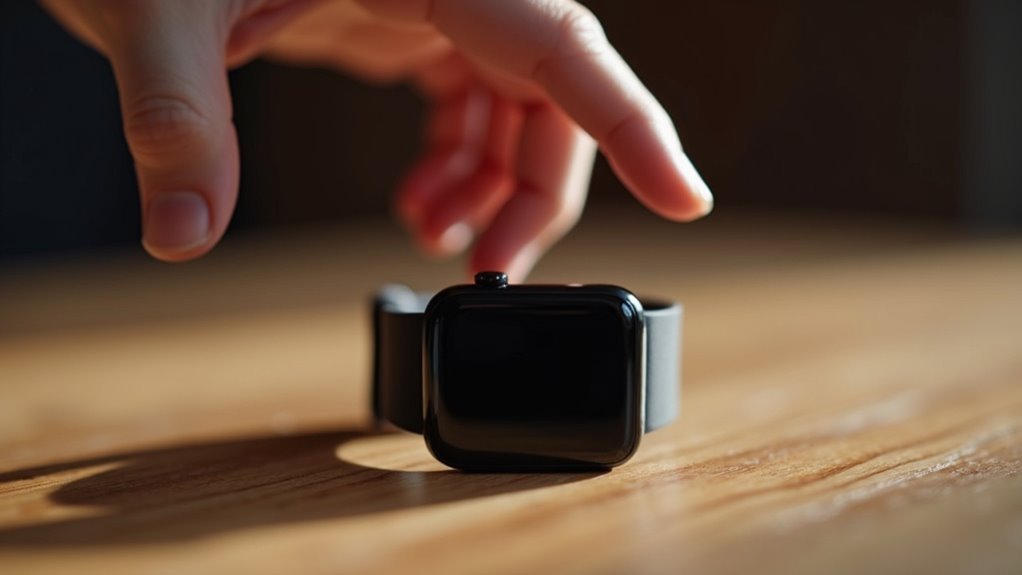
What makes a voice command interface truly intuitive for wearable GPS navigation? You’ll need to focus on intent recognition that understands both specific requests like “navigate home” and vague commands requiring clarification. Your interface must analyze utterances precisely while identifying slots like addresses or landmark names.
| Design Element | Implementation |
|---|---|
| Intent Recognition | Process specific navigation tasks and vague requests |
| Utterance Analysis | Parse exact words for accurate command interpretation |
| Slot Identification | Extract addresses, names, and numbers from commands |
| User Feedback | Provide auditory confirmations for hands-free operation |
| Error Handling | Manage unclear inputs with clarifying questions |
Consistency across devices builds user trust, while clear feedback mechanisms guarantee you understand command outcomes. Your wearable’s hands-free operation becomes truly efficient when voice commands integrate seamlessly with personalized navigation preferences. The interface should minimize energy-consuming functions to preserve the device’s limited battery life during extended navigation sessions.
Overcoming Technical Challenges in Wearable GPS Development
Although voice commands create intuitive interactions, developing reliable wearable GPS systems requires conquering several fundamental technical hurdles that can make or break your device’s performance.
You’ll face significant challenges when GPS signals can’t penetrate urban canyons or dense foliage, creating positioning errors that frustrate users.
Power consumption becomes your biggest enemy since continuous GPS tracking drains small batteries rapidly, forcing you to balance accuracy with runtime.
Your biggest obstacles include:
- Signal interference – Buildings and obstacles block satellite signals, causing multi-path errors in urban environments
- Power management – Balancing GPS sampling frequency against battery life requires sophisticated duty cycling strategies
- Dynamic accuracy – Fast movements and directional changes overwhelm GPS processing, demanding sensor fusion with IMUs
Modern wearable devices integrate micro-sensors like accelerometers and gyroscopes alongside GPS to capture comprehensive movement data that single technology cannot provide.
You’ll need advanced algorithms, miniaturized hardware, and intelligent power management to create truly reliable wearable GPS navigators.
Frequently Asked Questions
How Much Does It Typically Cost to Develop a Wearable GPS Device?
You’ll spend $8,000-$15,000 for basic wearable GPS development, $50,000-$150,000 for mid-complexity features, or $200,000+ for advanced medical-grade devices. Your final cost depends on complexity, integrations, and compliance requirements.
What Are the Legal Requirements for Selling Wearable GPS Devices Commercially?
You’ll need to comply with EEOC guidelines, ADA requirements, and varying state privacy laws. You must obtain explicit consent for GPS tracking, implement data protection measures, and follow state-specific consumer protection regulations before selling commercially.
How Long Does the Development Process Usually Take From Concept to Market?
You’ll typically spend 2-4 years developing wearable GPS devices from initial concept to market launch. This timeline depends on innovation complexity, regulatory approvals, testing phases, and your available resources for development.
Which Programming Languages Are Best for Voice-Activated GPS Wearable Development?
You’ll want Kotlin for Android wearables, Swift for iOS devices, and JavaScript with React Native for cross-platform development. Python works well for backend services, while Java remains solid for Android’s robust ecosystem integration.
Can Wearable GPS Devices Work Without Smartphone Connectivity or Internet Access?
Yes, you can use wearable GPS devices completely offline. They’ll receive satellite signals independently, store your location data locally, and sync information later via Bluetooth, USB, or Wi-Fi when convenient.
In Summary
You’ve now mastered the core elements needed to build your own voice-activated GPS wearable. By selecting the right hardware, implementing robust voice recognition, managing power efficiently, securing user data, and creating intuitive interfaces, you’ll overcome the typical development hurdles. Don’t let technical challenges discourage you—start prototyping today. Your wearable GPS navigator will soon guide users hands-free while keeping their data safe and their devices running all day long.

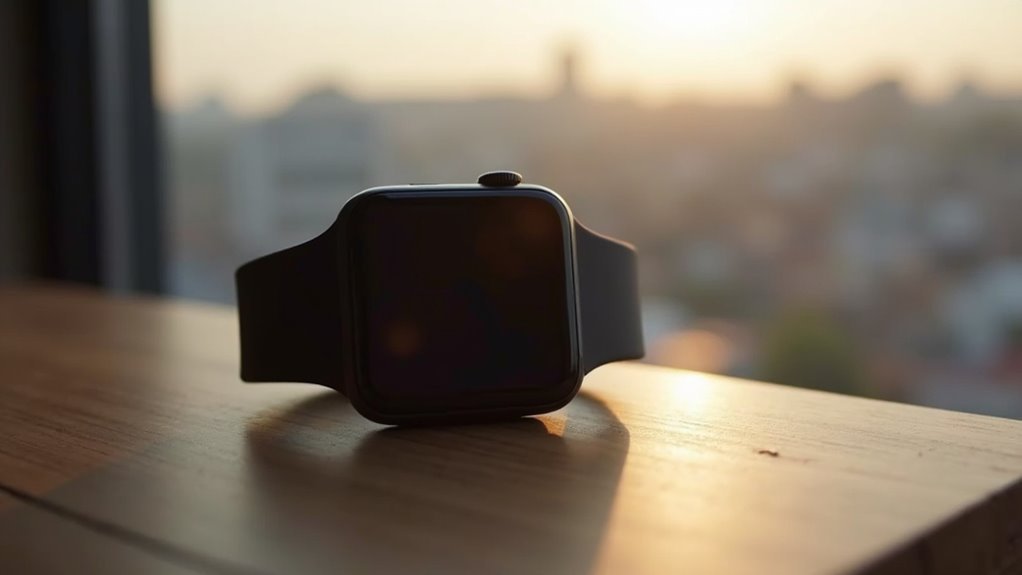

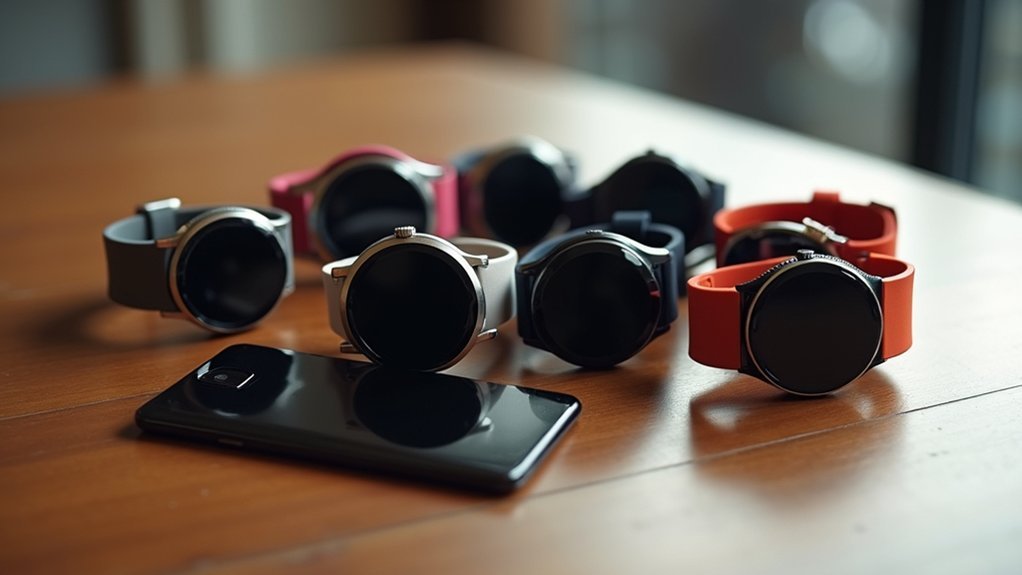
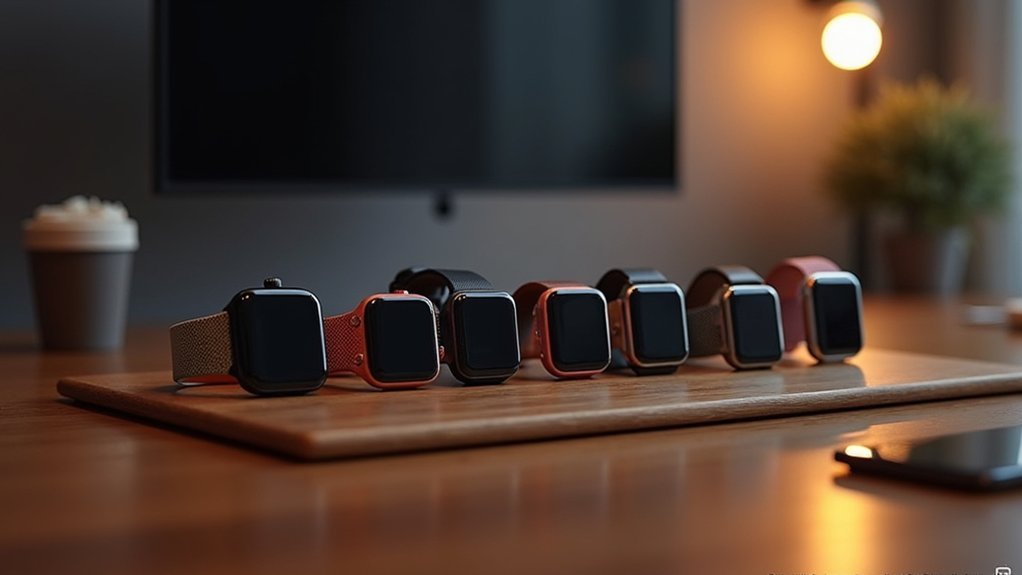
Leave a Reply